Have Mobile Phones Matched DSLRs in Imaging? After Testing Huawei and Nikon Devices, Our Findings Are Surprising
![]() 12/30 2024
12/30 2024
![]() 582
582
Recently, capitalizing on the tail end of Double 11, I acquired a Nikon Z5+24-50mm f4-6.3. Although priced initially at nearly 7,000 yuan, with various discounts applied, the final cost amounted to roughly 6,500 yuan, comparable to that of a top-tier smartphone.
While cameras are a frequent tool in my daily work, it wasn't until I owned one myself that I began documenting daily life with it. I discovered that the daily user experience of cameras differed from my initial expectations. Coincidentally, some brands had recently claimed that smartphone cameras rival those of DSLRs, prompting me to share my experiences over the past month, exploring the differences in user experience between current flagship smartphones and cameras.
Camera Drawbacks: Bulkiness and Steep Learning Curve
First, let's delve into the Nikon Z5's basics. As an entry-level full-frame mirrorless camera released in 2020, it boasts 24.3 million effective pixels, an EXPEED 6 image sensor, supports ISO settings from 100 to 51,200 (expandable to 50-102,400), facilitates 4K30fps video recording, and includes five-axis in-body image stabilization. The entire camera weighs 590 grams (without battery or memory card).
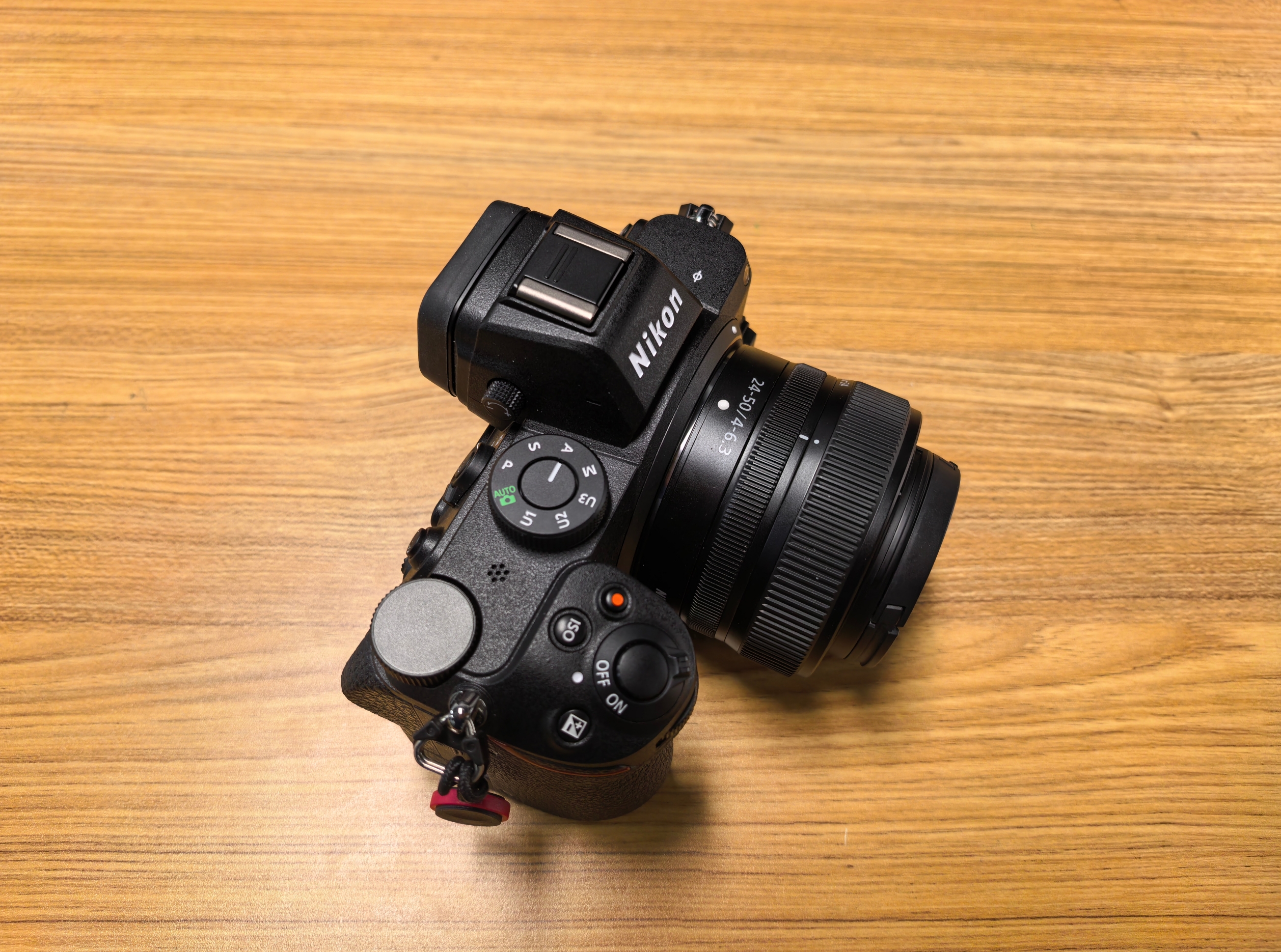
Source: Lei Technology
Specifications-wise, the Nikon Z5 isn't particularly remarkable; it's an entry-level Nikon product, after all. Its standout feature is the ability to purchase a brand-new full-frame mirrorless camera for about 6,000 yuan. With the battery and compatible lens, the total weight reaches 880 grams, roughly equivalent to four flagship smartphones.
This was my first challenge with street photography: the combined weight of the mirrorless camera and lens is indeed substantial, making prolonged holding tiring. After a few hours, my palms and fingers ached. Hence, it's not surprising that many photography bloggers recommend beginners start with lighter APS-C cameras, as a bulky full-frame mirrorless camera (relatively speaking) can quickly diminish one's interest in carrying it around before photography becomes enjoyable.
Beyond the camera's weight, users must also grapple with learning how to take photos. Smartphone photography is straightforward; unless specific lighting effects are desired, one simply takes out the phone, aims, considers composition briefly, and presses the shutter. The rest is handled by the phone's algorithms. Often, such casual shots yield decent photos, perfect for sharing on social media like WeChat Moments.
Cameras, however, differ. While an Auto mode exists, it merely sets shutter speed, aperture size, and ISO; it doesn't optimize scenes and subjects like a smartphone.
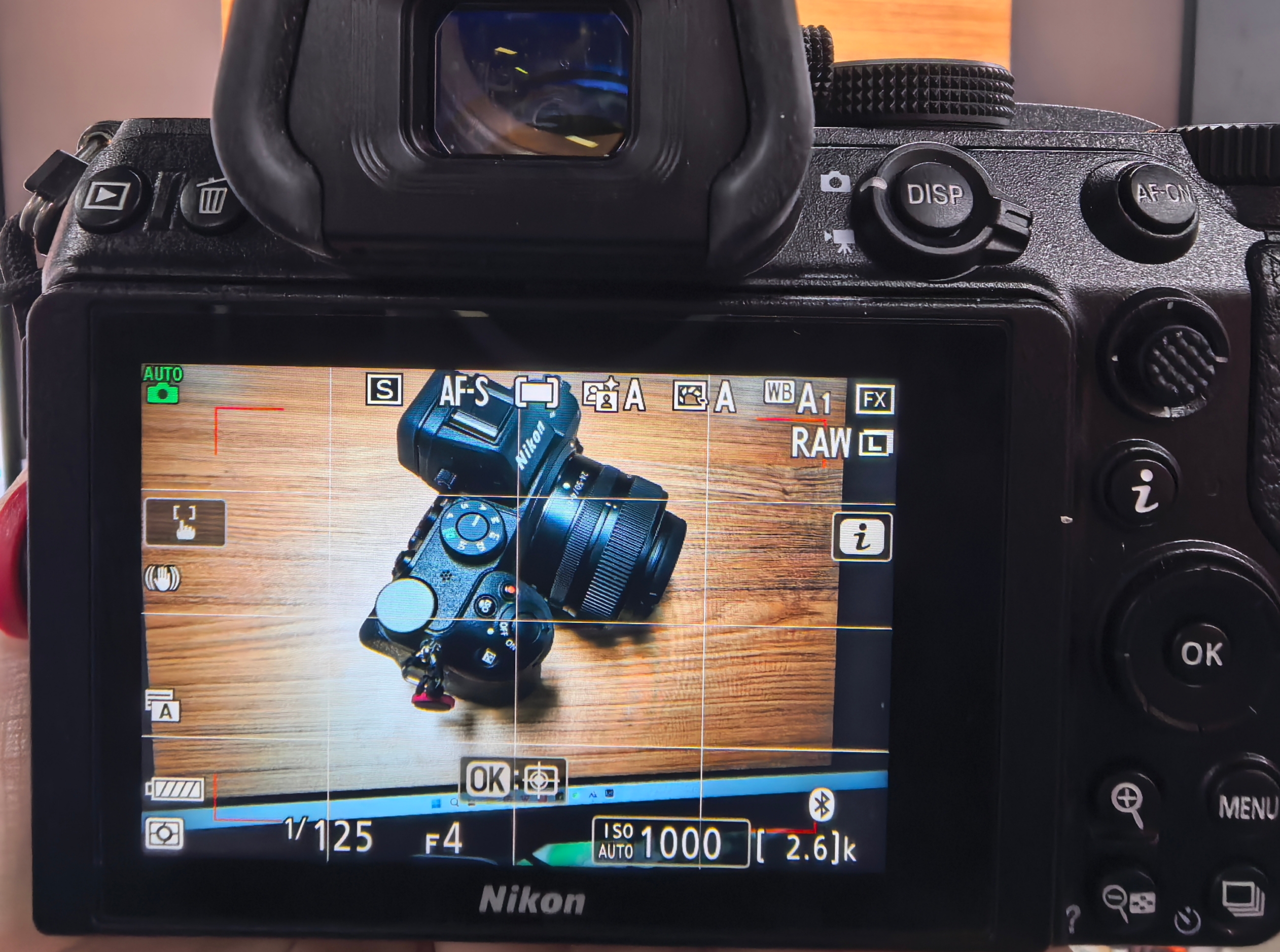
Source: Lei Technology
High-end mirrorless cameras employ AI algorithms, but they start at around 10,000 to 20,000 yuan, generally out of reach for beginners or non-professional photographers. Moreover, these cameras' AI primarily aids focusing and ISO settings, aiming to facilitate capturing clear photos rather than altering photo color rendering.
Switching from a smartphone to a camera, unaware of how to adjust settings for better photos, might disappoint with the camera's direct output. Many beginners thus revert to smartphones. After camera photography, images must be transferred to a PC or tablet for editing before social sharing. By then, smartphone-using friends have already discussed their next set of photos.
So, is the camera experience really so poor? Let's first examine sample comparisons between flagship smartphones and mirrorless cameras.
Smartphones Excel in Specific Imaging Scenarios Without Compromising Quality
To intuitively compare direct photo outputs between cameras and smartphones, most photos were taken in Auto mode, minimizing third-party influences. However, manual focusing and aperture adjustments were made for better photo effect comparisons. Models included Huawei Mate 70 Pro+, Nubia Z70 Ultra, and Nikon Z5 (24-50mm F4-6.3). This comparison is unbiased; I happened to have access to these flagship smartphones for imaging.
First, the first set of images: outdoor still life.

Source: Lei Technology. Note: From left to right are Huawei, Nubia, and Nikon
Today was overcast, so natural light was subdued. Under these conditions, the Huawei Mate 70 Pro+ stood out with colors closest to the Nikon Z5. The red maple leaves looked particularly good, while Nubia's performance was somewhat odd, with brighter lighting and a "fake" bokeh effect.
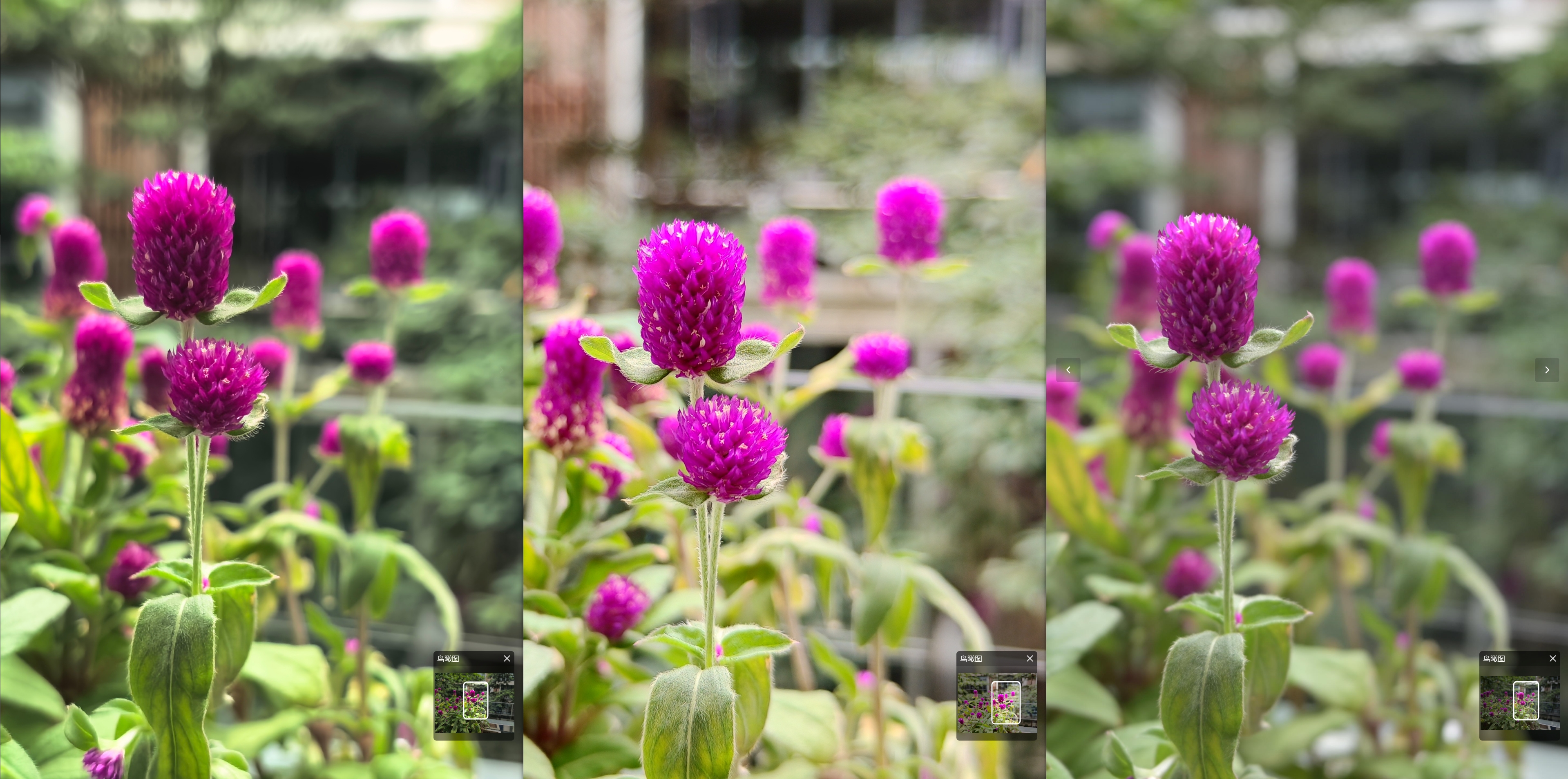
Source: Lei Technology. Note: From left to right are Huawei, Nubia, and Nikon
While current flagship smartphones support adjustable aperture for camera-like bokeh, achieving a good large-aperture bokeh isn't easy. Nubia's bokeh effect was somewhat disappointing.
The Nikon Z5 achieved its bokeh at F4 aperture, while Nubia and Huawei needed around F2.0 for noticeable bokeh. At F4, smartphone bokeh was limited to distant objects.
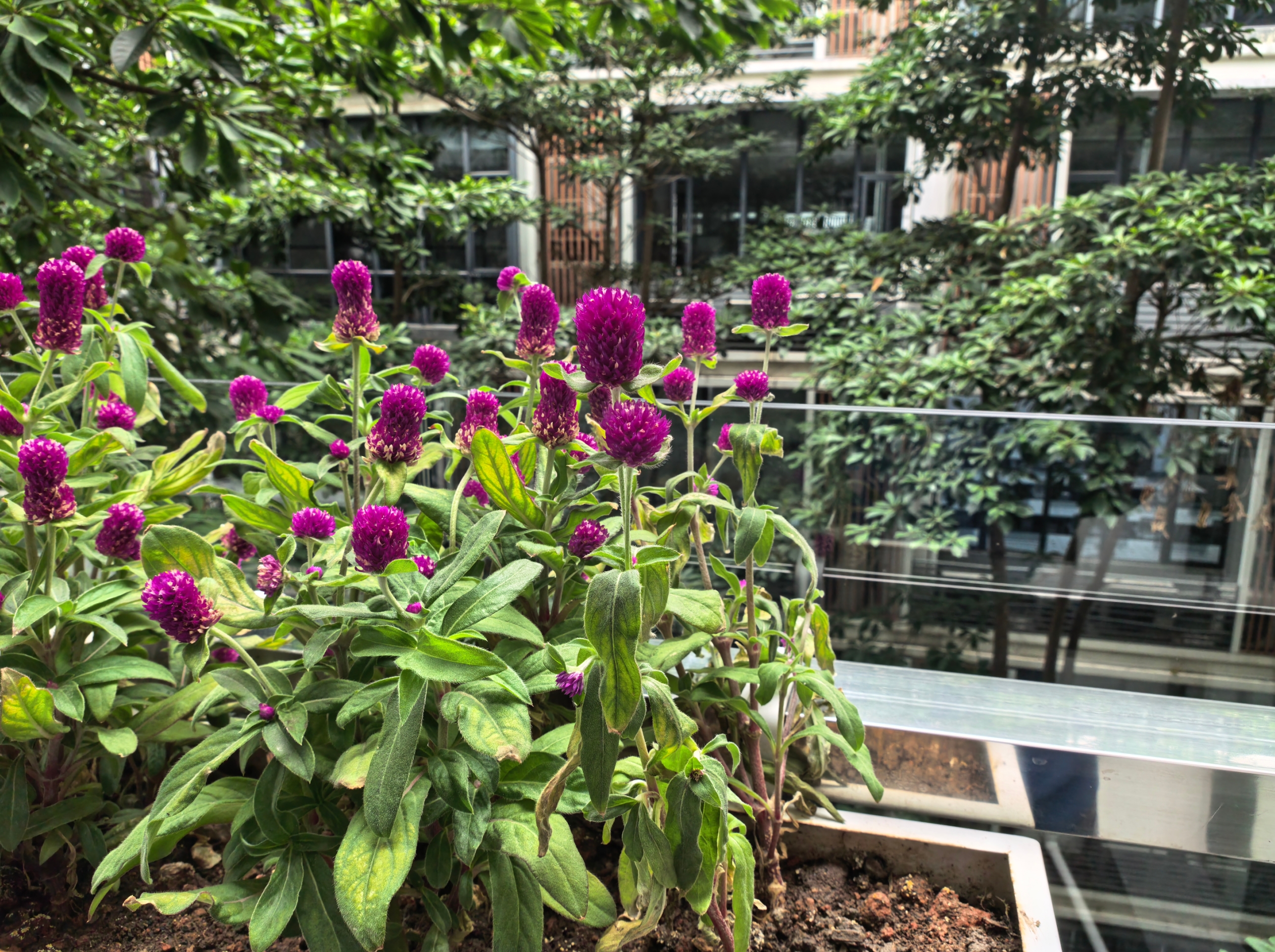
Source: Lei Technology. Note: Mate 70 Pro+ at F4 aperture
Now, a classic scenario: indoor photography with semi-bright lighting.

Source: Lei Technology. Note: From left to right are Huawei, Nubia, and Nikon
The Nikon Z5's performance here was average. While its photos were "realistic," for social media, the Nubia Z70 Ultra might offer a better viewing experience with better overall brightness and enhanced dark edges, showcasing scene details better.
The next set of images offered new insights into smartphone imaging algorithms. Light fixture colors differed across devices. Nubia had the largest color deviation, Huawei was slightly reddish, and the Nikon Z5 had Auto mode white balance issues, appearing cooler with whiter light fixtures.

Source: Lei Technology. Note: From left to right are Huawei, Nubia, and Nikon
However, professional cameras' high dynamic range excels in such situations. With professional software like Lightroom, adjusting a few parameters restores normal white balance:
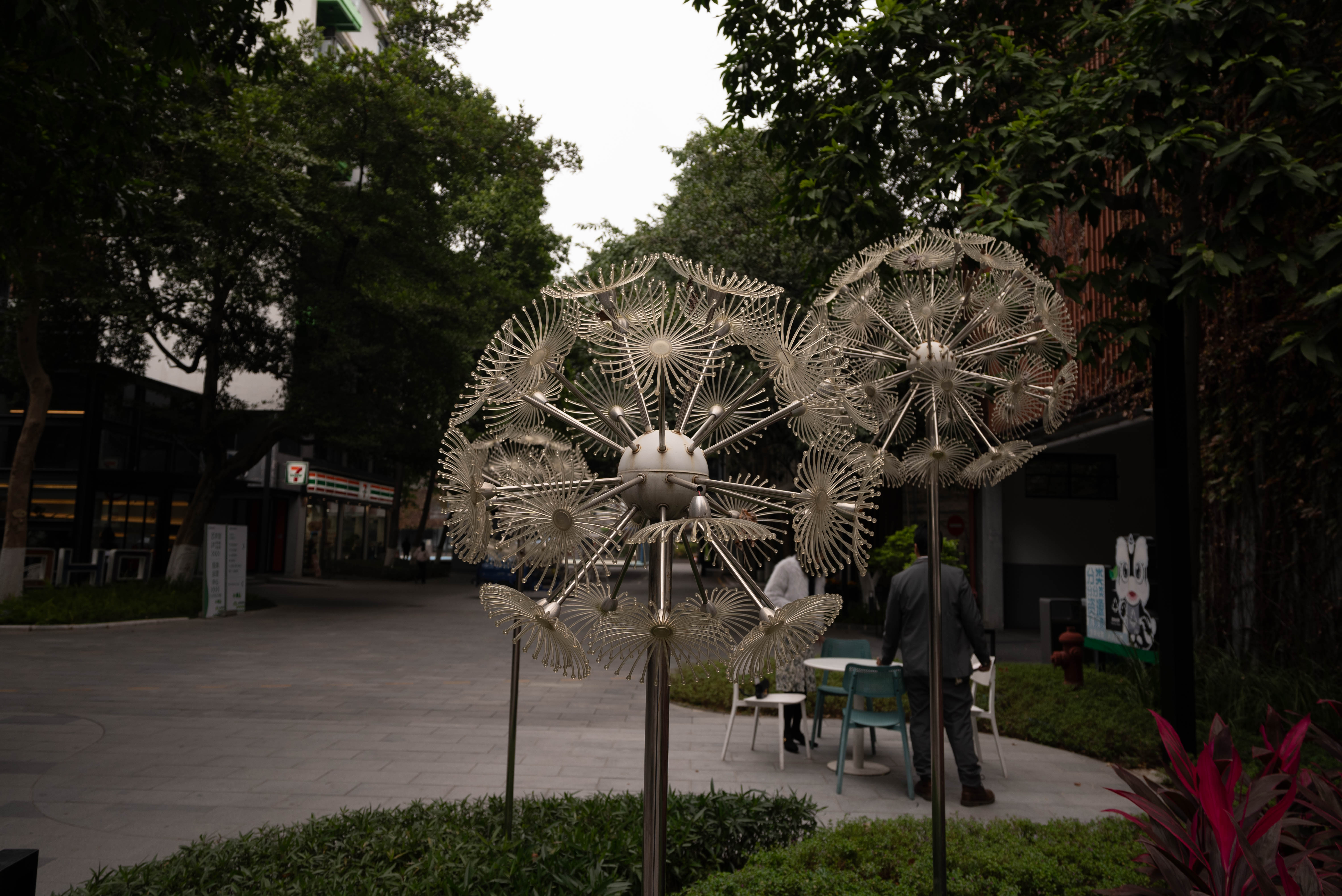
Source: Lei Technology
The light fixture's color was indeed reddish, and since exposure and other parameters weren't adjusted, photo brightness remained low.
Huawei's imaging technology impressed, with excellent red maple leaf color reproduction and natural aperture bokeh.
This doesn't mean smartphones rival professional cameras in bokeh. Current AI can't simulate true bokeh under limited conditions. In the following images, at maximum aperture, the Nikon Z5's bokeh was most natural, clearly showing front-to-back relationships, while smartphone bokeh showed AI intervention.

Source: Lei Technology. Note: From left to right are Huawei, Nubia, and Nikon
Finally, low-light performance, where smartphones and cameras differ most. During my month with the camera, I learned that taking good night photos isn't easy. Limited by night lighting, manual adjustments are often needed for different scenes and subjects. A flash is best for brightening people.
Smartphones don't have this issue. Built-in flashes and night scene algorithms meet most nighttime photography needs without manual adjustments, producing decent night photos.
Photographing a moon lamp under an office building, the smartphone screen was brighter. While the Nikon Z5's output was realistic, many prefer Huawei's or Nubia's photos for visual appeal. The eternal debate between smartphones and cameras: "realism" or "beauty."

Source: Lei Technology. Note: From left to right are Huawei, Nubia, and Nikon
Camera night photography isn't a complete loss. While smartphone night scene algorithms enhance low-light photography, they can cause light bloom. In this sample, both Huawei and Nubia had varying light bloom, with Huawei better controlled around light fixtures and Nubia's spilling over the photo.

Source: Lei Technology. Note: From left to right are Huawei, Nubia, and Nikon
In contrast, even with the cheapest lens, a DSLR camera's light bloom control is impeccable. This is due to the sensor's light-sensitive area. The large full-frame sensor captures more light, ensuring normal shooting without significantly increasing ISO in high-contrast scenes.
Due to time constraints, I selected representative image sets to illustrate camera and smartphone differences.
Can Smartphones Replace Cameras? Yes, for Daily Use, But Not for Professional Photography
After reviewing samples, you likely have conclusions about smartphone and camera imaging performance.
Flagship smartphones now boast impressive imaging capabilities, with AI algorithms enhancing color rendering. In contrast, similarly priced cameras require manual adjustments or white balance tools (like an 18% gray card) for accurate colors.
After showing samples to a photography-novice colleague, they preferred Huawei's, especially daytime scenes. If not scrutinizing bokeh and focusing on color and brightness, Huawei's direct output is stunning, so this wasn't surprising.

Source: Lei Technology
After simple color adjustments to DSLR photos, my colleague struggled to choose. Ultimately, the Nikon Z5 won. In bokeh and other aspects, cameras have significant physical advantages. Upon closer inspection, light-dark contrast details were more natural. My colleague said, "This looks more natural, clear, and comfortable."
While smartphone manufacturers tout DSLR-level imaging, they can't truly replace cameras. Current AI algorithms can't quite achieve that. Qualcomm researches using AI to realistically simulate and reconstruct optical paths, combining imaging algorithms for realistic lighting and scene restoration—but 100% restoration is challenging.
AI algorithms have significantly boosted smartphone imaging, improving casual photo quality. They even offer composition suggestions, turning ordinary people into amateur photographers. In this scenario, professional cameras' applicability shrinks.
In my view, the daily shooting experience gap between smartphones and cameras is minimal, with smartphones often outperforming directly. Not everyone has photographic knowledge. For casual outings, a flagship smartphone suffices for most scenes.
For post-processing and "magic of light and shadow," a camera is best. The bokeh from large aperture lenses is hard to simulate on smartphones.
In conclusion, I believe that for the majority of ordinary individuals who do not intend to delve deeply into photography, a mobile phone stands as the optimal shooting tool. Regarding mobile phone manufacturers' marketing of a "DSLR-like experience," the direct output quality, with the exception of the bokeh effect, is indeed on par with that of traditional cameras. However, in terms of the bokeh effect, mobile phones still have room for improvement.








